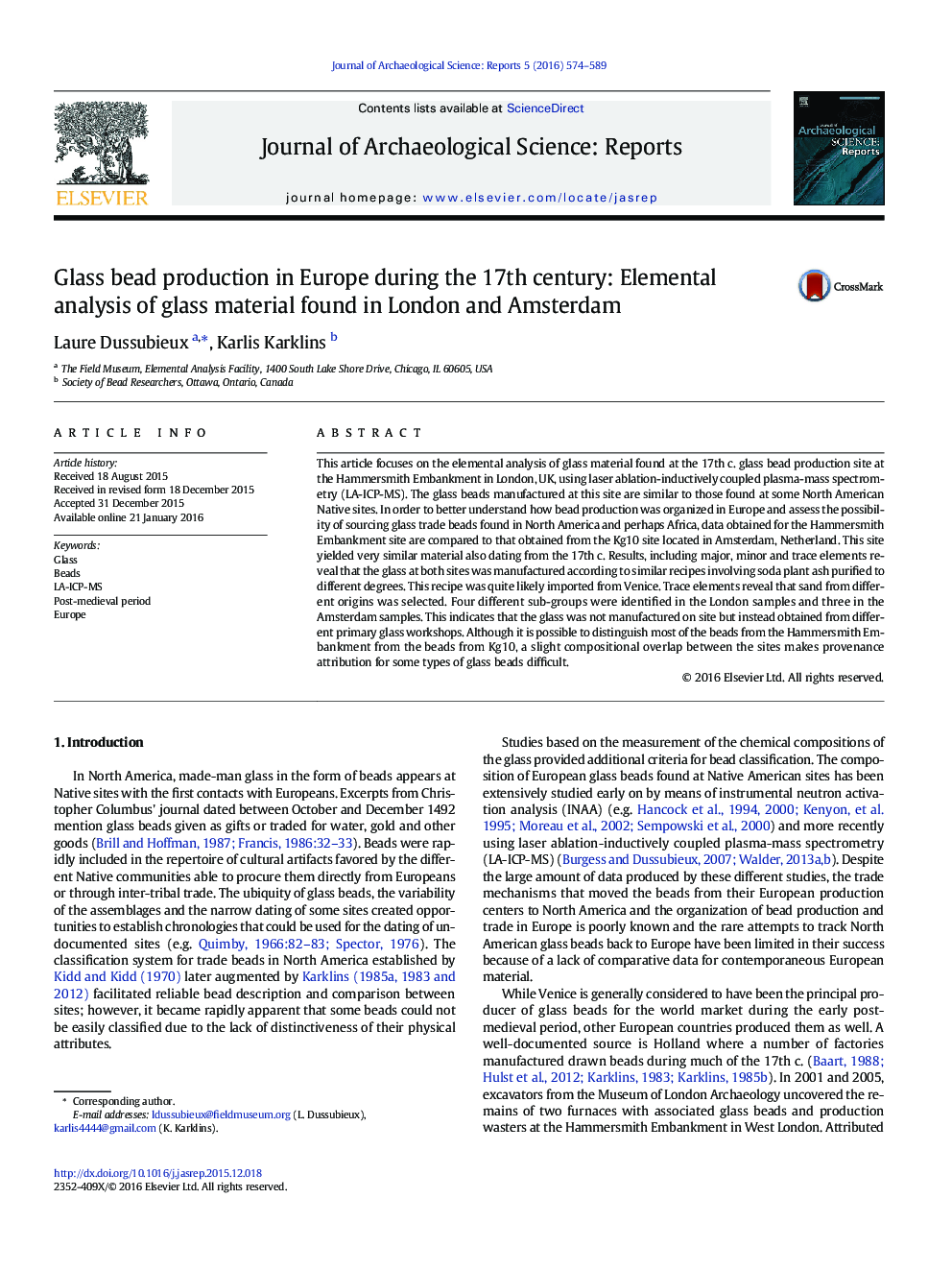| Article ID | Journal | Published Year | Pages | File Type |
|---|---|---|---|---|
| 7446472 | Journal of Archaeological Science: Reports | 2016 | 16 Pages |
Abstract
This article focuses on the elemental analysis of glass material found at the 17th c. glass bead production site at the Hammersmith Embankment in London, UK, using laser ablation-inductively coupled plasma-mass spectrometry (LA-ICP-MS). The glass beads manufactured at this site are similar to those found at some North American Native sites. In order to better understand how bead production was organized in Europe and assess the possibility of sourcing glass trade beads found in North America and perhaps Africa, data obtained for the Hammersmith Embankment site are compared to that obtained from the Kg10 site located in Amsterdam, Netherland. This site yielded very similar material also dating from the 17th c. Results, including major, minor and trace elements reveal that the glass at both sites was manufactured according to similar recipes involving soda plant ash purified to different degrees. This recipe was quite likely imported from Venice. Trace elements reveal that sand from different origins was selected. Four different sub-groups were identified in the London samples and three in the Amsterdam samples. This indicates that the glass was not manufactured on site but instead obtained from different primary glass workshops. Although it is possible to distinguish most of the beads from the Hammersmith Embankment from the beads from Kg10, a slight compositional overlap between the sites makes provenance attribution for some types of glass beads difficult.
Related Topics
Social Sciences and Humanities
Arts and Humanities
History
Authors
Laure Dussubieux, Karlis Karklins,
